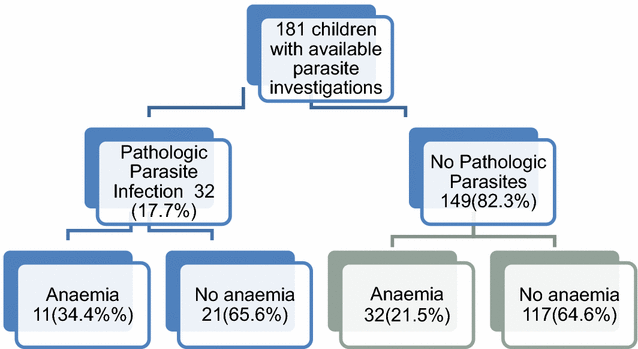Anaemia control and the interpretation of biochemical tests for iron status in children
- PMID: 28441968
- PMCID: PMC5405488
- DOI: 10.1186/s13104-017-2472-5
Anaemia control and the interpretation of biochemical tests for iron status in children
Abstract
Background: Anaemia is one of the world's most prevalent child health problems. Its control in Africa and other developing nations has been hindered by uncertainty regarding its cause. Anaemia control has been particularly problematic in regions where the non-iron deficiency causes of anaemia, are projected to be substantial. The implementation of effective interventions to reduce the anaemia prevalence, requires improved documentation on iron status and other causes of anaemia for target populations.
Methods: This cross-sectional study enrolled n = 184 children, aged 6-8 years from Kwazulu-Natal, South Africa. Tests of haemoglobin, serum ferritin, soluble transferrin receptor and C-reactive protein were performed. These conventional measures of iron status were used to calculate body iron and to categorize the children into different groups of anaemia profiles.
Results: Anaemia prevalence was high, 43/184 (23.4%). Iron deficiency anaemia contributed 7/43 (16.3%) to the anaemia prevalence compared to non-iron deficiency anaemia 34/43 (79.1%) and mixed anaemia 2/43 (4.7%). In total 47/184 (25.5%) of the sampled children had either iron deficiency or anaemia. Information about the presence of inflammation was used to adjust serum ferritin concentrations, resulting in improved diagnosis of iron deficiency.
Conclusion: Appropriate investigations for iron status and inflammation/infection screening, need to be integral in the evaluation of anaemia and its causes before anaemia control interventions are implemented. Interventions that target the multifactorial nature of anaemia in school-aged children need to be strengthened. Additionally, regular screening of anaemia in school-aged children from disadvantaged communities is recommended.
Keywords: Anaemia; Body iron; Ferritin; Inflammation; Iron deficiency; Parasite infection; Serum transferrin receptor.
Figures
References
-
- United Nations Administrative Committee on Coordination Sub-Committee on Nutrition (ACC/SCN) and International Food Policy Research Institute (IFPRI) United Nations Administrative Committee on Co-ordination: Fourth Report on the World Nutrition Situation. Geneva; 2000.
-
- Stoltzfus RJ and Dreyfuss ML. Guidelines for the use of iron supplements to prevent and treat iron deficiency anaemia. International Nutritional Anaemia Consultative Group. 2003. http://www.who.int/nutrition/publications/micronutrients/guidelines_for_.... Accessed 15 Aug 2016.
MeSH terms
Substances
LinkOut - more resources
Full Text Sources
Other Literature Sources
Medical
Research Materials


